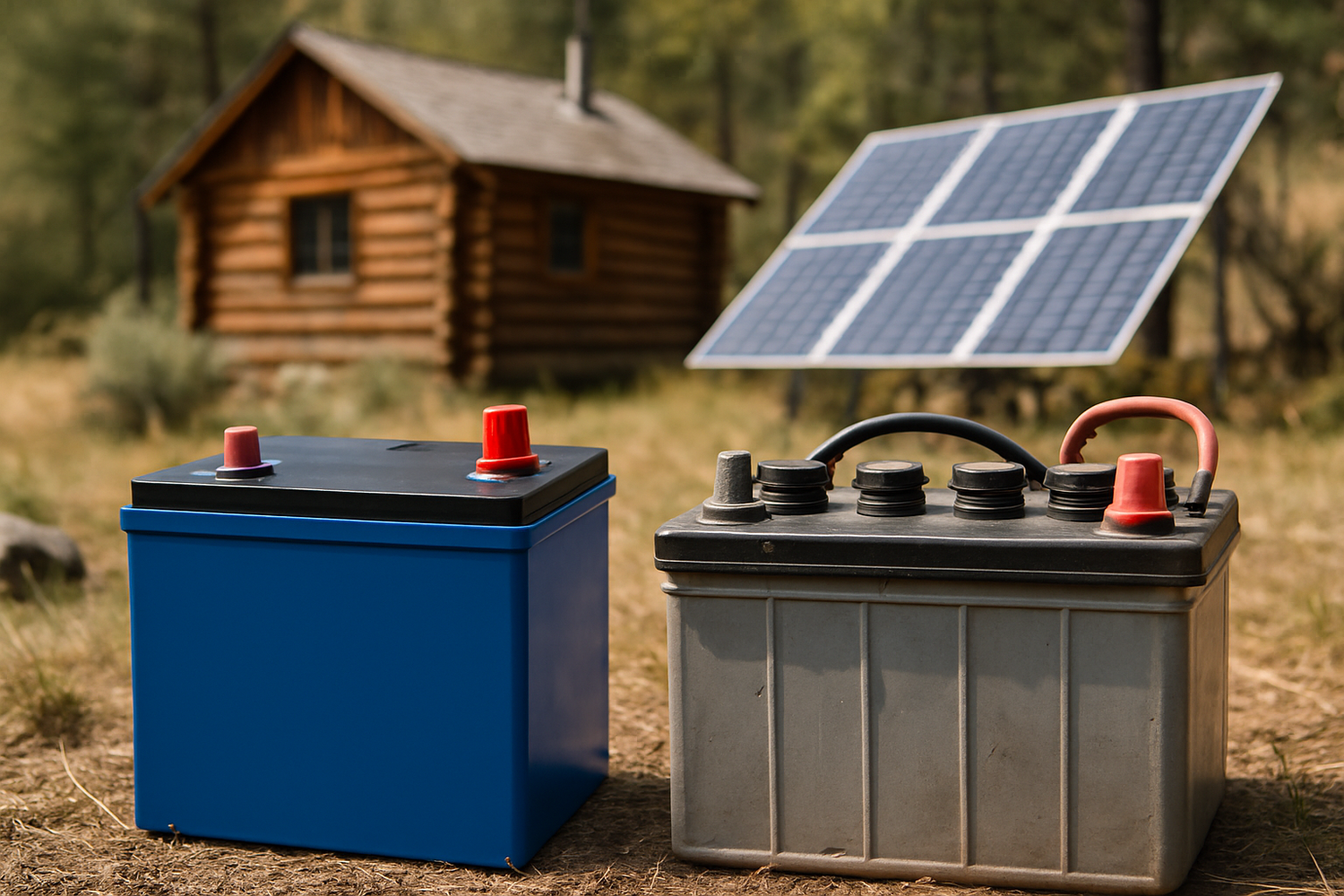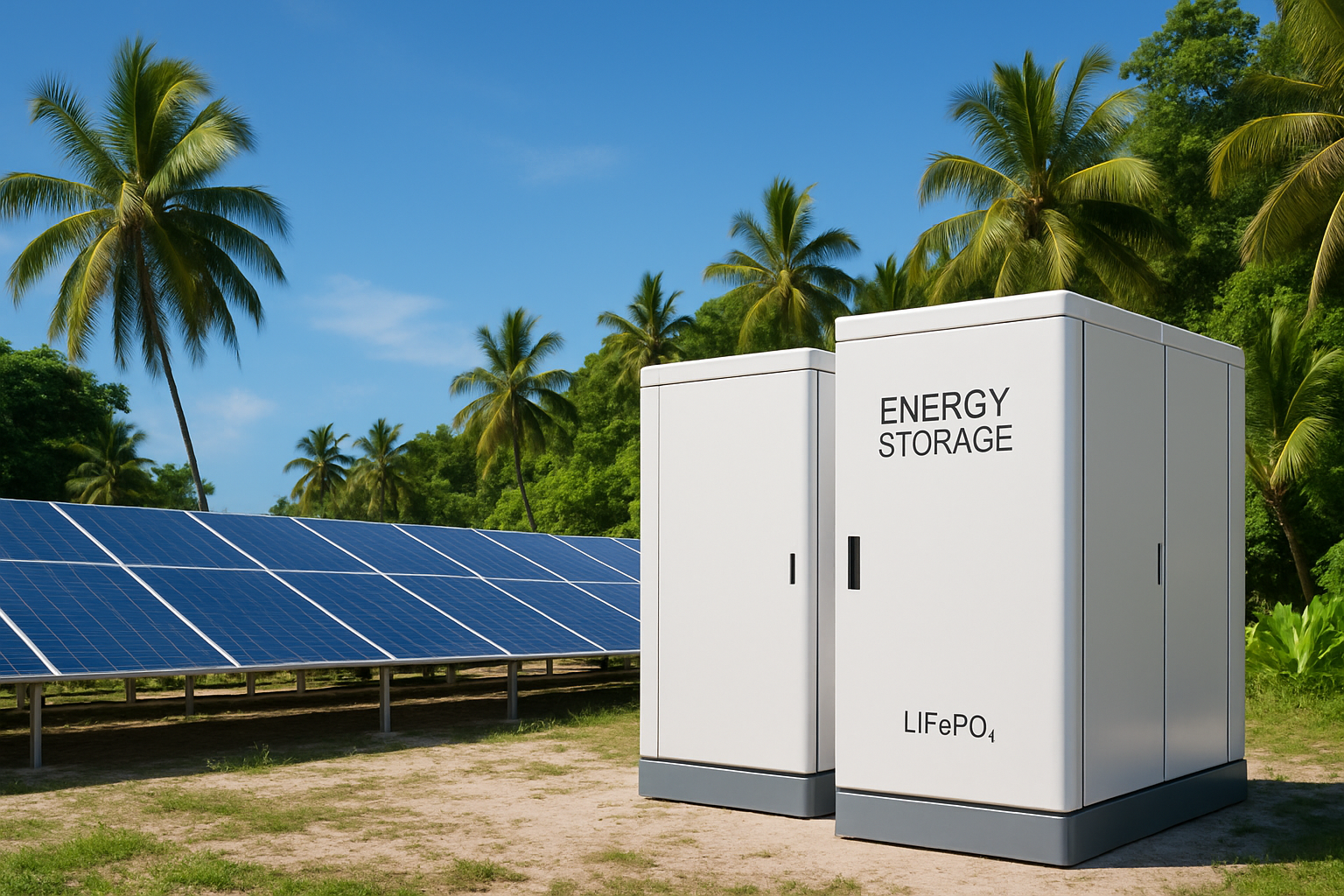Living off-grid offers incredible freedom and self-sufficiency. At the core of any reliable off-grid system lies its energy storage: batteries. Making the right battery choice and understanding its care requirements is paramount for consistent power. You generally choose between two primary technologies: traditional lead-acid batteries and modern Lithium Iron Phosphate (LiFePO4) batteries. While both store energy, their maintenance needs differ significantly. Understanding these distinctions helps you maximize battery lifespan and ensure uninterrupted power for your home or farm.

Understanding Battery Fundamentals: A Quick Look
Before diving into maintenance, let's briefly review what each battery type offers.
Lead-Acid Batteries: The Traditional Workhorse
Lead-acid batteries have powered vehicles and off-grid systems for over a century. They are known for their robust nature and lower initial cost. These batteries use a sulfuric acid electrolyte and lead plates. Common types include flooded (wet cell), sealed absorbed glass mat (AGM), and gel batteries. Flooded versions require regular checks and water top-ups, while AGM and gel are sealed and need less active maintenance. Lead-acid batteries are generally considered safe when handled and maintained properly, but they do produce hydrogen gas during charging and contain corrosive sulfuric acid and toxic lead .
LiFePO4 Batteries: The Modern Solution
LiFePO4 batteries represent a newer, advanced lithium-ion chemistry. They utilize lithium iron phosphate as the cathode material, offering high energy density, a long cycle life, and enhanced safety . These batteries are increasingly popular in electric vehicles, renewable energy storage systems, and various consumer electronics. LiFePO4 batteries are celebrated for their stability, resistance to overheating, and non-flammable electrolyte, making them a safer choice compared to other lithium-ion chemistries . They typically include an integrated Battery Management System (BMS) to monitor and protect the cells .
Key Maintenance Differences: A Direct Comparison
The core differences in chemistry translate into vastly different maintenance routines.
Charging Protocols and State of Charge (SOC) Management
Lead-acid batteries prefer a full charge to prevent sulfation, a process where lead sulfate crystals build up on the plates, reducing capacity and lifespan . You often need to perform equalization charges to balance cells and prevent stratification of the electrolyte . For long-term backup applications, lead-acid batteries can be maintained at a high state of charge without significant aging .
LiFePO4 batteries, in contrast, thrive with a wider usable State of Charge (SOC) range. They do not suffer from sulfation and do not require equalization charges. While they can be charged to 100%, many experts suggest operating them between 20% and 80% SOC to maximize their lifespan . For long-term storage, keeping LiFePO4 batteries at a partial charge, around 50% SOC, is often recommended to maintain chemistry stability and prevent degradation .
Temperature Sensitivity and Environmental Considerations
Temperature profoundly impacts battery performance and longevity for both types.
- Lead-Acid: These batteries are sensitive to temperature extremes. High temperatures accelerate degradation and reduce lifespan, with a 10°C rise above 25°C potentially halving the battery's life . Cold temperatures reduce their capacity and ability to deliver power . Optimal operating temperatures for lead-acid batteries typically range from 20°C to 25°C (68°F to 77°F) . Charging in cold weather requires temperature compensation to adjust voltage .
- LiFePO4: LiFePO4 batteries exhibit better thermal stability and can operate across a broader range, typically from -20°C to 60°C (-4°F to 140°F) . However, charging below 0°C (32°F) can cause lithium plating, which permanently damages the battery . Many LiFePO4 batteries include self-heating technology to enable safe charging in freezing conditions . Optimal charging is often recommended between 0°C and 45°C (32°F and 113°F) .
Monitoring and Cell Balancing
Monitoring is crucial for battery health, but the methods differ.
- Lead-Acid: For flooded lead-acid batteries, you regularly check electrolyte levels and specific gravity using a hydrometer to gauge SOC and cell health . Voltage monitoring is also used, though it can be less accurate when the battery is under load . Sealed lead-acid batteries primarily rely on voltage monitoring.
- LiFePO4: These batteries typically integrate a Battery Management System (BMS). The BMS actively monitors individual cell voltages, temperature, and current, performing automatic cell balancing to ensure all cells charge and discharge uniformly . This internal management significantly reduces the need for manual checks.
Routine Care and Longevity: What to Expect
The day-to-day and long-term care routines are where the differences become most apparent.
Watering and Cleaning
Flooded lead-acid batteries require regular distilled water top-ups as water evaporates and is consumed during charging . Neglecting this can expose battery plates, leading to damage. All battery types benefit from keeping terminals clean to prevent corrosion, but this is especially critical for lead-acid batteries due to potential acid residue . LiFePO4 batteries are sealed and never require watering .
Cycle Life and Depth of Discharge (DoD)
The number of charge and discharge cycles a battery can endure before its capacity significantly degrades is its cycle life. This is a major differentiator.
- Lead-Acid: These batteries generally offer a shorter cycle life, typically ranging from 300 to 1,500 cycles, depending on the type and how deeply they are discharged . Discharging them beyond 50% DoD can severely shorten their lifespan .
- LiFePO4: LiFePO4 batteries boast a much longer cycle life, often exceeding 3,000 to 6,000 cycles, and sometimes even more . They tolerate deep discharges, typically up to 80-100% DoD, without significant degradation . This means you can use more of their stored energy regularly.
Storage Requirements
Proper storage is essential to prevent premature aging.
- Lead-Acid: Store lead-acid batteries fully charged to prevent sulfation. Apply a topping charge every six months to keep the voltage above critical levels . Store them in a cool, well-ventilated area, away from ignition sources .
- LiFePO4: For extended storage, keep LiFePO4 batteries at a partial charge, ideally around 50% SOC . Cycle them at least once every six months if stored for long periods . LiFePO4 batteries are less prone to self-discharge compared to lead-acid batteries .
Here is a summary of key maintenance differences:
| Feature | LiFePO4 Batteries | Lead-Acid Batteries |
|---|---|---|
| Initial Cost | Higher | Lower |
| Lifespan (Cycles) | 3,000 - 6,000+ cycles | 300 - 1,500 cycles |
| Usable DoD | 80-100% | 30-50% (for optimal lifespan) |
| Maintenance Frequency | Minimal (BMS managed) | High (watering, cleaning, equalization) |
| Charging Needs | Efficient, flexible SOC, no sulfation | Slower, full charges, equalization to prevent sulfation |
| Temperature Sensitivity | Better tolerance, but charging below 0°C needs caution | Sensitive to extremes, optimal 20-25°C |
| Weight & Size | Lighter, more compact | Heavier, bulkier |
| Safety Concerns | Very stable, less thermal runaway risk, non-flammable electrolyte | Hydrogen gas, corrosive acid, lead exposure risk |
| Long-Term Storage | Partial charge (around 50% SOC) | Fully charged, regular topping charges |
| Total Cost of Ownership | Lower (due to longevity, less maintenance) | Higher (due to shorter lifespan, more maintenance) |
Making Your Choice: Beyond Maintenance
Your decision between LiFePO4 and lead-acid batteries extends beyond just maintenance. Consider the total cost of ownership. While LiFePO4 batteries have a higher upfront cost, their significantly longer lifespan, higher efficiency, and minimal maintenance often make them more economical over time . For example, a LiFePO4 battery might last 7 to 8 years under the same operating conditions where a lead-acid battery lasts 1 to 1.5 years .
System complexity also plays a role. LiFePO4 systems, with their integrated BMS, often offer simpler operation and monitoring. Lead-acid systems, particularly flooded types, demand more hands-on attention. Ultimately, the best choice aligns with your budget, technical comfort, and specific energy needs for your off-grid lifestyle.
Securing Your Energy Independence
Choosing the right battery technology for your off-grid system is a foundational decision. LiFePO4 and lead-acid batteries each present distinct advantages and maintenance profiles. LiFePO4 offers a longer lifespan, greater usable capacity, and significantly reduced maintenance, making it a compelling choice for those seeking a 'set-and-forget' solution with a lower long-term cost. Lead-acid batteries remain a viable, cost-effective option for many, provided you commit to their more rigorous maintenance schedule. By understanding these critical differences, you can make an informed decision, ensuring your off-grid power system remains reliable and efficient for years to come.
Frequently Asked Questions
Are LiFePO4 batteries truly maintenance-free?
While LiFePO4 batteries require significantly less maintenance than lead-acid types, they are not entirely maintenance-free. Their integrated Battery Management System (BMS) handles crucial tasks like cell balancing and protection. You still need to monitor your system's performance, ensure proper charging parameters, and protect them from extreme temperatures, especially during charging below freezing points .
How often should I check my off-grid Lead-Acid batteries?
For flooded lead-acid batteries, you should check electrolyte levels monthly or quarterly, depending on usage and temperature, and top up with distilled water as needed. Terminal cleaning should happen every few months or as corrosion appears. Regular voltage and specific gravity checks are also important to monitor their state of health .
Can I mix LiFePO4 and Lead-Acid batteries in one system?
Mixing LiFePO4 and lead-acid batteries in the same system is generally not recommended. They have different charging voltage requirements, discharge characteristics, and internal resistances. Attempting to combine them can lead to inefficient charging, reduced performance, and potential damage to both battery types. It is best to stick with one battery chemistry per system.
What is the typical lifespan difference?
LiFePO4 batteries typically offer a significantly longer lifespan, often lasting 3,000 to 6,000 cycles or more, translating to 7-15 years of service . Lead-acid batteries, in comparison, usually provide 300 to 1,500 cycles, or 3-5 years of use, with their lifespan heavily dependent on the depth of discharge and maintenance quality .





Leave a comment
All comments are moderated before being published.
This site is protected by hCaptcha and the hCaptcha Privacy Policy and Terms of Service apply.